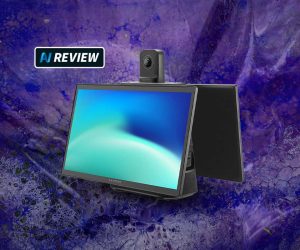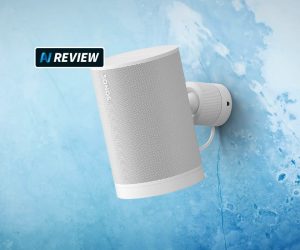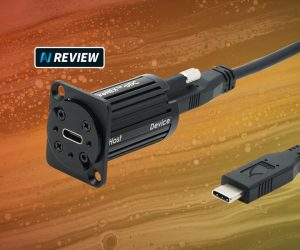
Review: IT Giants Sticking to WebRTC
Why Google, Microsoft and Mozilla are AV Companies.
Text:/ Jonathan McFarlane
IT is becoming AV in a very big way and it’s called Web Real-Time Communication (WebRTC). It’s going to change the way we think about video conferencing, live video and video streaming. In fact, it’s not just going to affect the audiovisual industry – it’s likely to shake up the four trillion dollar telecommunications industry thanks to Google, Mozilla, Opera, Microsoft and the broader online community of web developers.
WebRTC is a set of JavaScript Application Programming Interfaces (APIs) that make real-time communication available natively in the web browser. It allows web developers to rapidly build communication features into their websites, apps and digital products without the need for third party software packages or browser plugins.
WebRTC has three main components: Media Stream, Peer Connections and Data Streams. Media Stream allows the browser to access the camera and microphone and supports multiple channels of communication. Peer Connections does all the hard work for developers by providing a platform for making calls and managing the peer-to-peer connections process. Data Streams allow applications to communicate over the network through secure private data channels. These three work together to provide a standard platform with incredible possibilities.
We have already seen native features of the web browser take on proprietary plugins with HTML5 video. YouTube, Vimeo and most news and media sites use an HTML5 video player to reach both mobile devices and desktop browsers at the same time.
PLUG FREE
WebRTC will extend the capabilities of HTML5, and the combination of WebRTC and other web-standard technologies will be powerful. Developers can use standard design, layout and interactive features of cascading style sheets (CSS) and JavaScript to add a level of flexibility around video communication like never before. There are already examples such as real-time facial recognition and Instagram-like video effects and filters built into a video and photo web-app without any browser plugins.
We’ll see desktop software such as Skype move to the browser platform. This makes web conferencing highly flexible, accessible and easy to support – organisations won’t need to manage software licenses and installations, or depend on third-party plugins. It also increases security, integrating with corporate authentication systems and web standard security protocols.
One of the clear benefits of WebRTC and IT standard solutions in the AV industry is that they will be available in the home. This opens up new possibilities and allows people to work and study from anywhere in the world as the enterprise and education market will have a highly scalable collaboration system that can be customised, will integrate with their security systems and run on either their own standard IT equipment or on an outsourced cloud provider.
WebRTC is still in its early stages but many companies have already released applications. The main issue right now is that WebRTC is not yet a standard – it is still in the project phase and only available through the Chrome and Firefox browsers. Microsoft is contributing to the standard and has its Skype team proposing updates and fixes, which suggests that Internet Explorer will come to the party, and Opera now uses the Chrome engine so is already WebRTC-enabled by default.



READYSTREAM PROJECT
At Advanced Control and Acoustics (ACA) we have always taken a very simple philosophy with our development projects: the solution must be delivered through the web browser otherwise we won’t work on it. Naturally our ears pricked up when we first heard about WebRTC and we were excited about the possibilities for the audiovisual industry. With the help of six developers from the University of Sydney’s School of Information Technologies, we developed a prototype enterprise videoconference platform making use of WebRTC and other web-standard technologies. The resulting platform demonstrated the ability to integrate with a corporate authentication system, create virtual meeting rooms, share video and automatically scale based on bandwidth. The solution was code-named ReadyStream and can now be embedded in our other web-based products including our video platform CoTag Media.
The ReadyStream project demonstrated how quickly real-time communication features can be developed. It took less than six months for the team to build a videoconference platform from scratch, as most of the hard work was taken care of with the WebRTC APIs. This ease of implementation and the availability of examples and source code from the developer community means we will see real-time communication features turn up in many new and interesting ways.

THE DOCTOR IS ONLINE
Health is an obvious area where WebRTC can provide great benefits. Patient record systems can include an embedded web conferencing widget enabling links to virtual consulting rooms directly inside the patient file. Doctors could monitor patients’ vital signs through the data stream channels that are built into WebRTC and hold virtual consultancies. By building all these features into one cloud application, remote medicine is more accessible than ever. Any patient with web access can take part in a virtual consultation, eliminating the need to travel and extending modern medical care into remote areas via low cost web devices such as the $25 Raspberry Pi or the $60 Android smartphone.
GIANTS LEAP
The loudest voice behind the project is Google. The organisation holds workshops and conferences for developers to promote the draft standard, and was the first to release WebRTC in its browser. As Chrome accounts for some 50% of web users, there is already great potential for WebRTC products today.
What makes Google’s role in the project most interesting is its ability to provide a complete telecommunication and AV solution. Google is part of the infrastructure shakeup – while we are slowly rolling out the NBN in Australia, Google has delivered a fibre network in Kansas City, offering low cost internet plans with bundled TV packages based on the Chrome operating system. Every home that joins the network can use Google Chrome over an ultra-fast internet connection that is ideal for WebRTC.
Other IT companies are moving into the integration space as well, most notably Microsoft’s Interactive Entertainment Business (IEB) unit that looks after Xbox. I’ve worked on some interesting Xbox integration projects with my company Advanced Control and Acoustics, using the Xbox Kinect camera for automation. I’ve also seen many great examples of Xbox and interactive AV installation. Microsoft has been a big part of the success of these projects – the release of its Xbox API essentially invited developers to build applications for the Xbox camera without having to get ‘hacky’. Microsoft’s interest in home automation was also apparent in is its acquisition of the automation startup company R2 Studios, which has now become part of the IEB unit.
Microsoft’s series of future vision videos also demonstrates the IT giant’s commitment to AV and telecommunications technology. The videos are set in the near future and showcase technology such as interactive displays and advanced videoconferencing systems. One scene features a public digital display hosting a videoconference between an Indian busker and a commuter in a subway. The commuter donates a couple of dollars to the busker through an integrated payment system while the busker plays from a remote location, broadcasting to the city subway display. This virtual busking example demonstrates three areas that are converging: AV, IT and online payments, and at the centre of this is a videoconference that will be delivered through WebRTC.
Microsoft’s recent acquisition of the display company Perceptive Pixel clearly spells out its plans to be part of the AV industry. The interactive display technology will make many of the company’s future vision videos come true, combining with WebRTC running in Internet Explorer to provide a complete turnkey solution.
The web browser is the most used application on any computer. Browser technology has taken a huge leap forward since HTML5 and WebRTC is the next step – soon the web browser will be all that is needed to host video conferencing, presentations, digital signage or any other basic requirement of an audiovisual system. The development has supercharged the IT and AV convergence, with IT companies now driving the web standard for videoconferencing while simultaneously running infrastructure and manufacturing touch displays to provide a complete audiovisual solution. What hasn’t changed is the need for high quality integration and adaptable AV professionals.
HTML5: WHAT IS IT?
HyperText Markup Language (HTML) is one of the key elements of the World Wide Web. Through its familiar markup tags like <H1>, <img src=”images/AV_Logo.jpg”> and <a href=”http://www.av.net.au”>, HTML defines how the material on a web page should be processed and displayed by the web browser software (Internet Explorer, Safari, Firefox, Chrome, Dolphin, etc) on the device you’re using to view the web. Each family of web browsers implements the markup in its own way, so the World Wide Web Consortium (W3C) attempts to set down uniform behaviours for the way browser software should process the markup tags.
Early versions of HTML were fairly basic, offering the web designer little more than some basic document layout capabilities, the ability to display a couple of types of image, and of course the cornerstone of the WWW – the links to the other documents and pages that make up the Web. A simple scripting language (JavaScript) was included to allow for some interactivity between the web browser program and its host computer.
Because of the limitations of early versions of HTML, a vast range of bolted-on technologies were shoe-horned into web pages to encourage them do more exciting things like make changes on-the-fly, scroll text across the screen, generate moving images, play movie files and music, run live interactive games, process forms and embed other web pages in windows on the screen.
HTML5 is an attempt to tidy up the existing mess and produce a version of HTML that will have all the capabilities that a modern web application needs including persistent data storage, image generation, a capable media player, interactive data communications, better page layout tools, more text fonts and the ability to access other devices connected to your computer such as cameras, microphones, fingerprint readers and game controllers. It is due for completion by late 2014 but in the meantime, many of the parts are under development and being implemented in web browsers on an ‘experimental’ basis in their draft form. Real-time communication is one of the new technologies being developed for HTML5 and WebRTC is the result. — AC
API
An Application Programming Interface is a defined recipe for one program (application) to access the capabilities of another. For example, if a weather program needs to get a file of current temperature and precipitation information from a host computer somewhere on the internet, the author of the program can have the data fetching done for them. Rather than having to write all the code to find that weather data computer somewhere on the internet, ask it for the data, then transport it back across multiple networks, the author of the weather program sends a request through the API of the local computer’s communications program, telling it what’s needed and which computer should have it. They then let the communications program get on with the job of fetching the data while the weather program goes about drawing its maps, calculating the daily maximum and displaying images of smiling suns or crying rainclouds. — AC















RESPONSES